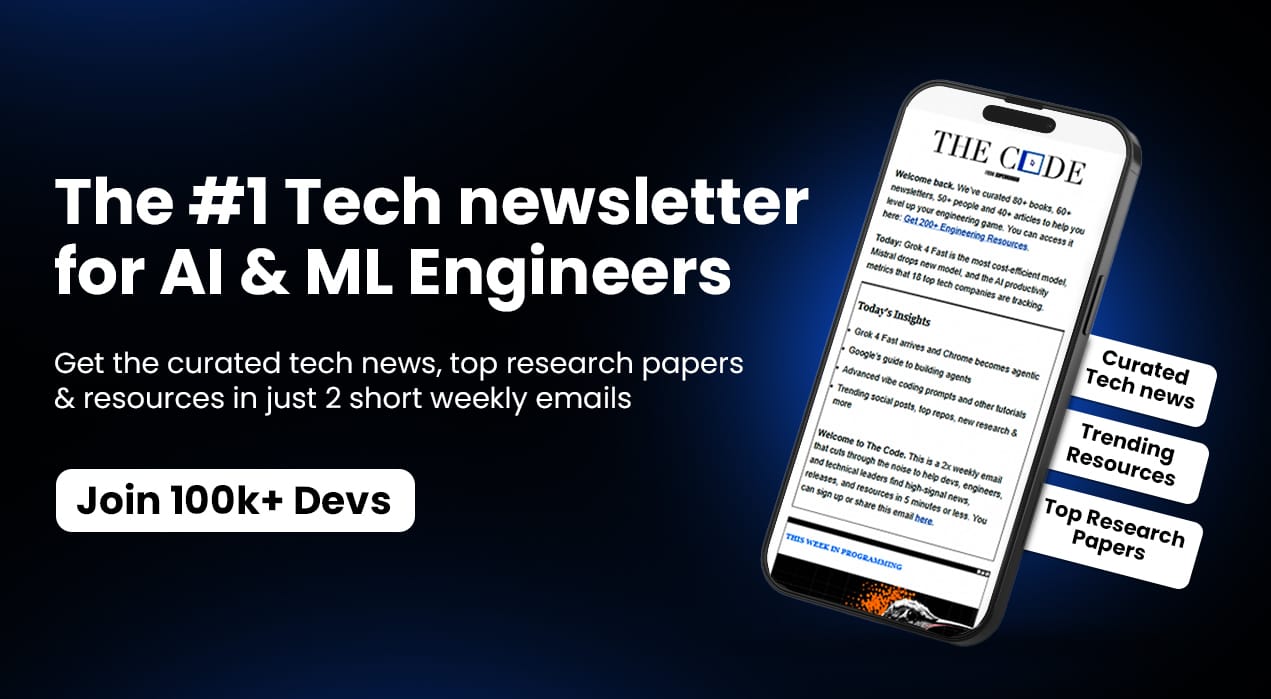Hello, I’m back. What are you working on today?
New & Trending AI Tools
Transor: Translate websites, documents, images, and videos with AI.
Seekario: Land your dream job with AI job copilot.
Mockuplabs: Turn any images into professional product mockups.
App2.dev: Turn your ideas and Figma designs into web and mobile apps in minutes.
Find your next winning ad creative in seconds with AI
Most AI tools promise you thousands of ads at the click of a button. But do you really need more ads—or just better ones?
Kojo helps you cut through the noise. We analyze your paid social data to uncover the ideas with the highest chance of success. Then, our AI predicts which concepts will perform best, so you don’t waste budget testing what won’t work.
Instead of drowning in endless variations, Kojo sends your best idea straight to a real human creator who makes it engaging, authentic, and ready to win on social. The entire process takes less than 20 seconds, giving you certainty before you spend and better performance without the waste.
Why gamble on guesswork or settle for AI spam when you can launch ads proven to work, made by people, and backed by data?
Ai News
Elon Musk announced that xAI is postponing the launch of Grokipedia to the end of the week.
AWS crash exposes risks of single-cloud dependence.
OpenAI partners with Hollywood to crack down on celebrity deepfake videos.
Anthropic expands Claude into life sciences.
The medical AI startup OpenEvidence has reportedly raised $200M in funding.
OpenAI employees claimed that GPT-5 had cracked 10 previously unsolved math problems.
AWS: Why It Crashed?
A major Amazon Web Services (AWS) outage early Monday caused widespread disruptions across popular platforms including Amazon, Alexa, Snapchat, Fortnite, and even ChatGPT.
The problem started in the US-EAST-1(Virginia) region and was eventually traced back to an internal DNS failure within AWS’s EC2 network. Amazon said it applied recovery measures, and most systems are now back to normal.

The outage began around 3:11 AM ET, knocking out critical cloud infrastructure and APIs across multiple services. Updates from AWS indicated that things were largely restored by 12:13 PM ET.
The downtime didn’t just affect entertainment and consumer apps. It also hit business tools like Perplexity, Airtable, Canva, Zapier, and even the McDonald’s app, disrupting operations for countless users and companies that rely on AWS.
Amazon later explained that the root cause was an internal system monitoring network load balancers, which mistakenly throttled the launch of new EC2 instances.
The incident underscores how dependent the internet is on AWS and why companies need multi-cloud strategies and strong redundancy plans to stay resilient.
What 100K+ Engineers Read to Stay Ahead
Your GitHub stars won't save you if you're behind on tech trends.
That's why over 100K engineers read The Code to spot what's coming next.
Get curated tech news, tools, and insights twice a week
Learn about emerging trends you can leverage at work in just 10 mins
Become the engineer who always knows what's next
Productivity
Go to Gemini and select ‘NanoBanana’ as your model.
Enter your prompt and hit Enter.

Sample Prompt:
“Create a 1:1 minimalist conceptual advertisement for the brand: [BRAND]. Do not repeat the brand name in any part of the text or visual.
Include:
A bold headline (max 6 words),
A short supporting subheadline (optional),
A symbolic, photorealistic visual that reflects the message,
The official logo of the brand, placed once at the bottom,
A short slogan (max 6 words) aligned with the brand’s tone.
Style: minimal, clever, high-resolution, cinematic lighting, strong negative space, professional layout.”
In seconds, you’ll have a highly professional conceptual ad ready to preview.
Make any final edits, then save it for your next campaign
The AI Insights Every Decision Maker Needs
You control budgets, manage pipelines, and make decisions, but you still have trouble keeping up with everything going on in AI. If that sounds like you, don’t worry, you’re not alone – and The Deep View is here to help.
This free, 5-minute-long daily newsletter covers everything you need to know about AI. The biggest developments, the most pressing issues, and how companies from Google and Meta to the hottest startups are using it to reshape their businesses… it’s all broken down for you each and every morning into easy-to-digest snippets.
If you want to up your AI knowledge and stay on the forefront of the industry, you can subscribe to The Deep View right here (it’s free!).
Idea of the Week: Build A Chrome Extension
This Chrome Extension Does Almost “Nothing”
Today’s story is about a Chrome extension that does almost nothing.
And that’s why it works.
A few years ago, a developer built a tiny Chrome extension called WikiRoulette (later cloned dozens of times under names like RandomWiki and WikiEveryday).
What does it do?
Each morning, when you open a new tab, it shows you one random Wikipedia article.
That’s it.
Just one random article about anything from Roman architecture to the world’s smallest frog.
It sounds useless… but that’s the point.
The extension turned curiosity into a habit.
People loved starting their day learning something completely random and sharing it on Reddit or TwitterSoon, it had tens of thousands of daily active users.
A few clones on the Chrome Web Store now show 100,000+ installs each.
The developer didn’t even need to maintain it.
Wikipedia is the engine.
The extension just pulls a random article link each day using Wikipedia’s open API.
It’s a 20-line JavaScript project that turned into a passive audience of curious people.
So how does it make money?
Two ways:
1. New tab ads: Most users keep the extension as their “default new tab.” That’s prime real estate. By embedding a small search bar or an unobtrusive ad banner, the developer earns ad revenue on every new tab opened.
2. Newsletter upsell: One clone launched a daily “Random Fact Email” that links back to the site. It built a 30,000+ subscriber list, monetized with sponsorships and affiliate links.
A niche audience. Zero content creation. Fully automated.
Let’s do some quick math:
If the extension has 100,000 users, and 20% of them open 10 tabs a day with ads,
that’s 200,000 ad impressions daily.
At a $5–$8 CPM (typical for new-tab search ads), that’s roughly $1,000–$1,600/month in ad revenue from something that took a weekend to build.
Add newsletter sponsors or donations, and you’re looking at a $2,000–$3,000/month micro business.
Not bad for a project that literally shows you random Wikipedia pages.
Here’s what I love about this story:
It’s not about information.
It’s about curiosity as a product.
People are bored of being productive.
Sometimes, they just want something interesting, once a day, to make them feel smarter.
That’s a business.
Now imagine replicating this idea in other niches:
A Chrome extension that shows one random startup pitch each morning.
One that gives you a random business idea per tab.
One that reveals a random painting or space photo each day.
Or even one that sends you a random Wikipedia article from your city.
Each one can be monetized the same way like ads, newsletter, or upsell to premium curiosity content.
So next time someone says your idea is “too simple,” remember that someone out there is earning money every day from showing people random Wikipedia articles.
That’s your alley dispatch for the week. Next one drops soon.
— Arman from Fringe Alley




